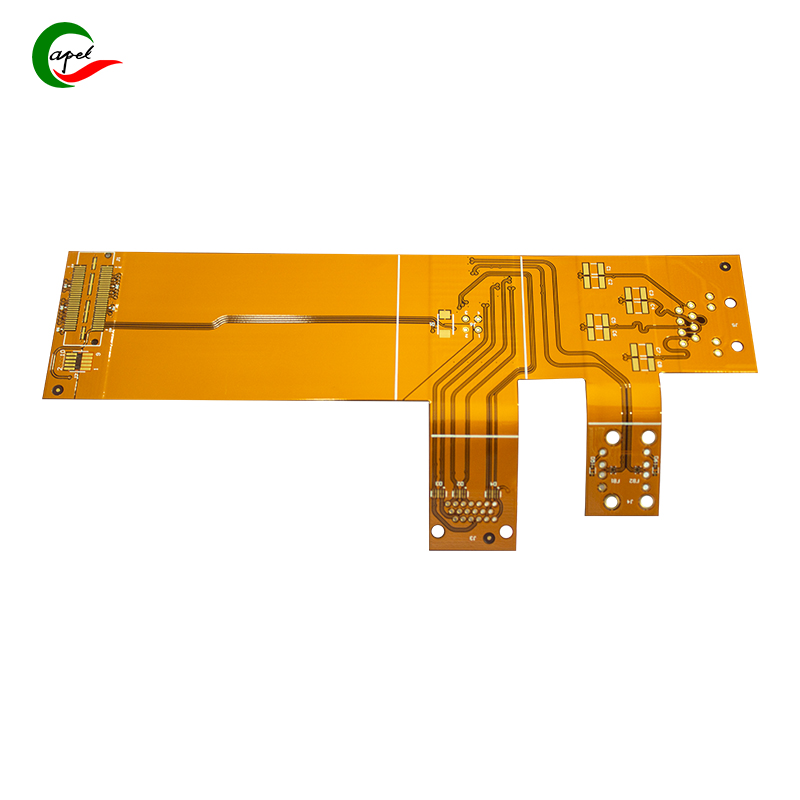Date: 2025-10-13
Let's talk about something that seems simple but can make or break your flex PCB design: trace width selection. I've seen too many projects stumble because engineers treated 0.1mm and 0.2mm traces as interchangeable - they're not. The difference goes well beyond just physical dimensions.
Current Handling: Why 0.2mm Isn't Just "A Little Better"
When we're working with standard 1oz copper (about 35μm), the current handling difference between these two widths will surprise you. Through actual testing and IPC standards, here's what we've found:
A clean 0.1mm trace can handle about 1A with a reasonable 10°C temperature rise. But push it much beyond that, and you'll see the trace temperature climb rapidly. That same 10°C rise gives a 0.2mm trace about 2A of capacity.
The reason comes down to cross-section. That 0.2mm trace doesn't just have twice the cross-sectional area - it also has better heat dissipation characteristics. The extra copper mass acts as a heat sink, pulling thermal energy away from the narrowest parts of the circuit.
Here's something I've learned the hard way: these numbers assume ideal c onditions. In real-world applications where your flex circuit is folded inside an enclosure, ambient temperature can easily reach 50°C or higher. At that point, your 0.1mm trace might only safely handle 0.7A, while the 0.2mm trace could still manage around 1.4A.
The Bond Strength Question: It's Not About Width, It's About Implementation
Many designers worry that wider traces might hurt layer adhesion. From what I've observed, the trace width itself matters less than how you implement it.
With 0.1mm traces, the real danger is etching quality. If your manufacturer uses suboptimal etching processes, those narrow traces can end up with rough, uneven edges. Those microscopic imperfections create air pockets where the coverlay adhesive can't make proper contact. I once had a batch of sensors fail environmental testing because of this exact issue.
For 0.2mm traces, the concern shifts to spacing. When you place these wider traces too close together, adhesive can get trapped between them during lamination. This creates what we call "adhesive pooling" - areas where the bonding is inconsistent. The fix is straightforward: maintain at least 0.1mm spacing between your 0.2mm traces to allow for proper adhesive flow.
Practical Design Advice From the Trenches
After working with hundreds of flex designs, here's my approach:
First, size your traces for current with a safety margin. If your design calls for 1A, don't push a 0.1mm trace to its limit - use 0.2mm instead. I typically add 20-30% overhead beyond the calculated requirement.
Second, know your manufacturer's capabilities. Some shops claim they can handle 0.1mm traces, but their etching process isn't precise enough for consistent results. Ask them about their etching methodology and request cross-section samples if you're pushing the limits.
Third, consider the entire current path. I once debugged a design where the 0.2mm trace was fine, but the connection to a component used 0.1mm necking - that became the failure point.
The Bottom Line
Choosing between 0.1mm and 0.2mm traces isn't just about fitting more circuits in less space. For power lines or any significant current, the 0.2mm trace's doubled current capacity makes it the clear choice. For signal lines carrying milliamps, 0.1mm works fine if your manufacturer can produce them cleanly.
The bonding issues with either width are manageable with proper design and the right manufacturing partner. What matters most is matching your trace dimensions to both your electrical requirements and your fabrication capabilities.
related link:
Capel manufacturing PCBs since 2009. Professional technology and high-precision Printed Circuit Boards involved in Medical, IOT, UAV, Aviation, Automotive, Aerospace, Industrial Control, Artificial Intelligence, Consumer Electronics etc..